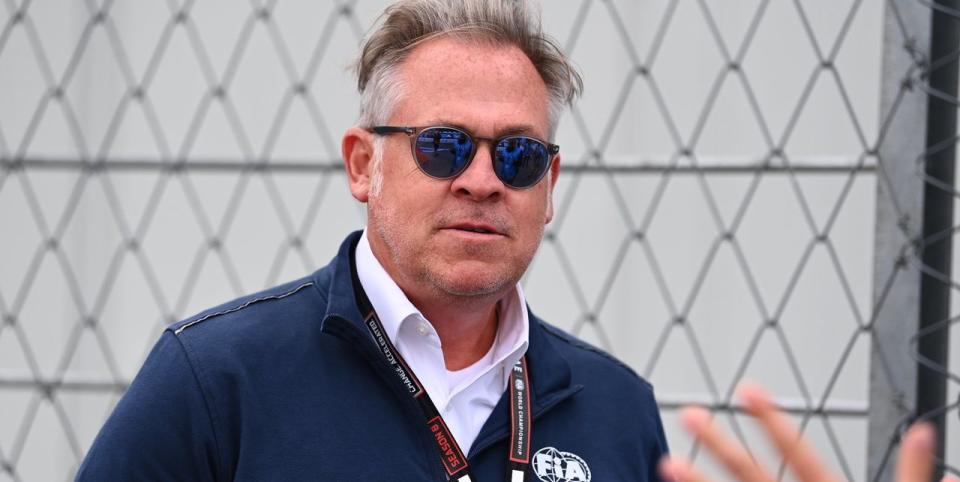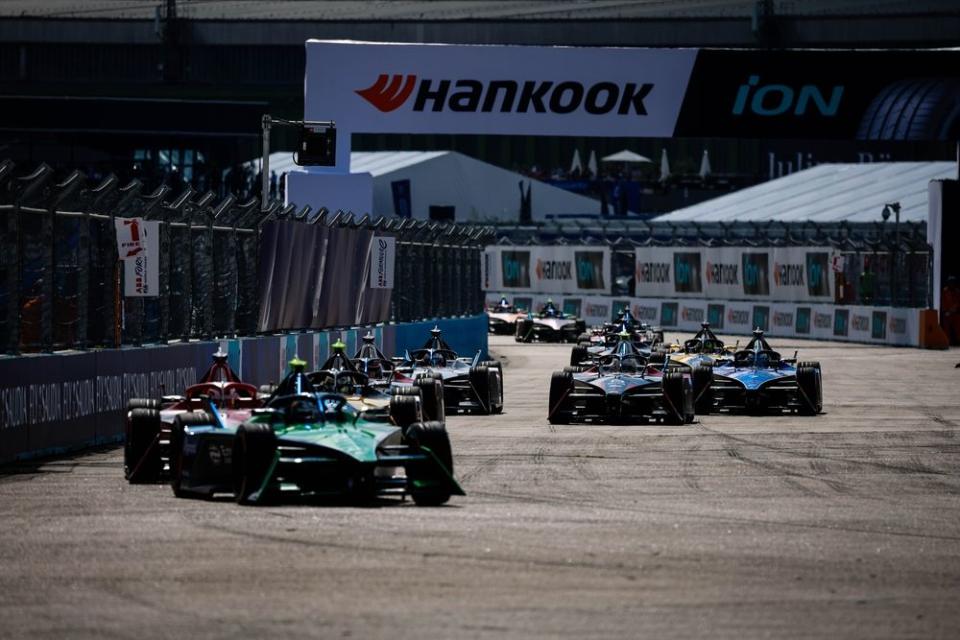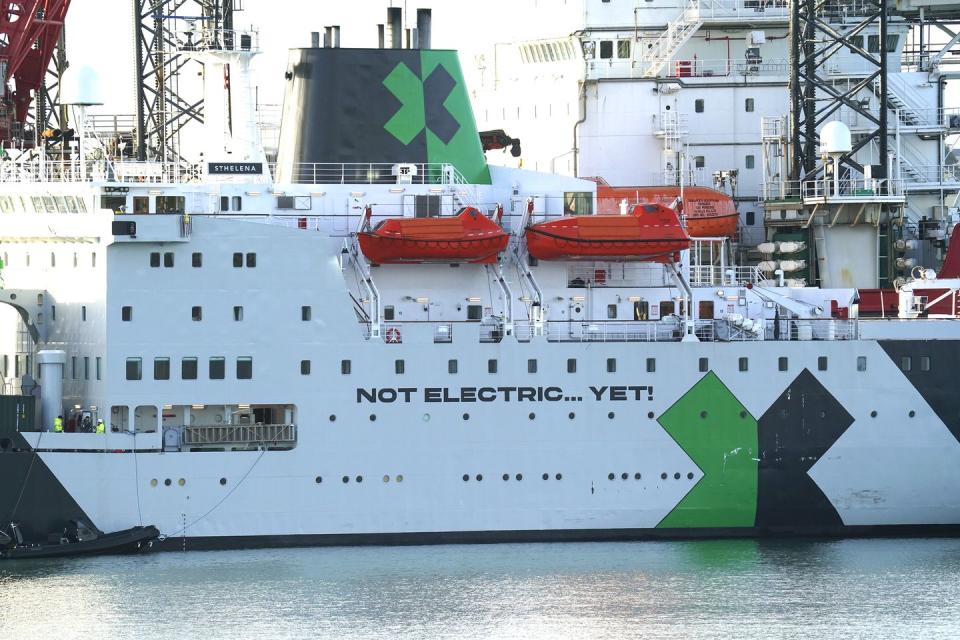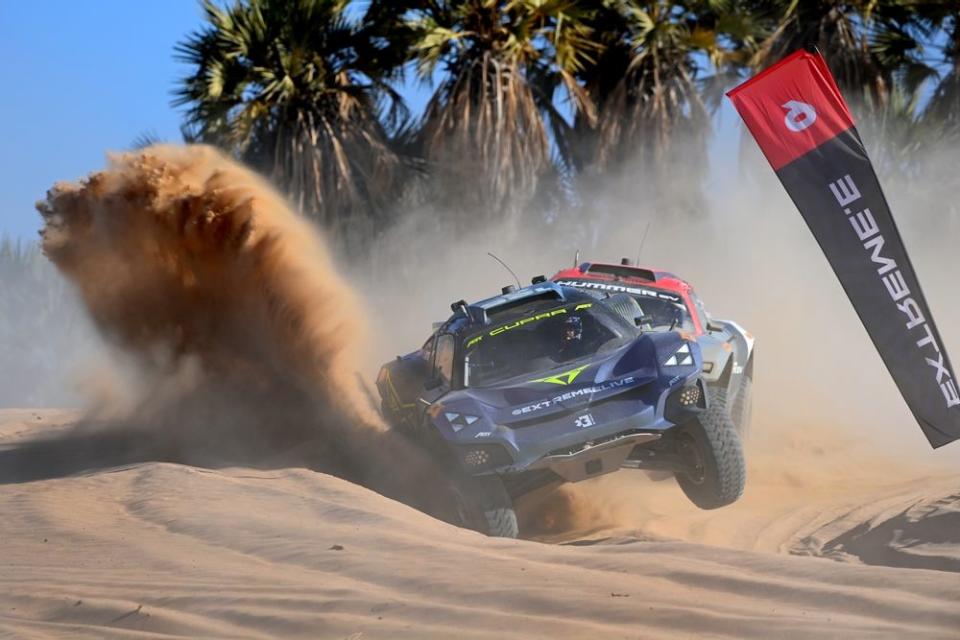American Scot Elkins in Perfect Orbit as Race Director for FIA Formula E, Extreme E

The Portland, Ore., course for June 24 Formula E race is a deviation from the series’ city street circuits and will see slight tweaks.
Racers, Elkins says, have unique opportunities in the all-electric motorsport to be ‘a part of the computer of the car’.
Elkins even helped design a potential race course on the Moon.
What’s Scot Elkins, a farm boy from near Terre Haute, Ind., doing, inspecting streets from Hyderabad, India, to Sao Paulo, Brazil, to Berlin, Cape Town, Monaco, and Jakarta . . . and even designing a racing course on the Moon?
Elkins can regale a crowd with insight into growing corn and beans and harvesting hay and can tutor someone about the craftsmanship and design of a bespoke Taylor Guitar. But how and why has he also traded his life of suburban comfort in Southern California for sharing the occasional week on a refitted British Royal Mail Ship called the St. Helena?
Why would he ditch Disneyland-style indulgence several weeks a year to share tight quarters on a boat with a fleet of battery-powered race cars, chairs made from recycled plastic bottles, a hydroponic herb garden, and a handful of climate-change scientists?
Elkins is race director for both the EV-rooted ABB FIA Formula E Championship and its off-road, race-in-remote-locations cousin, the Extreme E Series. And he jokes that he’s “the token American” in the midst of this European-centric pioneering movement that’s designed simultaneously to showcase the benefits of sustainable electrification in motorsports and to raise awareness about how reducing our carbon footprint can have a positive effect on climate change.

“It's an amazing experience. Just our team at the FIA, we've got people from Spain, Poland, France, Germany. There’s just the experience of working with it and then translate that to all the teams and everybody that's different. And then it's just an amazing experience,” Elkins said.
“That first race I did in Long Beach, I just filled in for someone. And I was living in Northern California at the time, and I knew enough people through the racing network that I had,” Elkins, a former Champ Car and IMSA tech executive and deputy race director for Formula 1, F2, and F3, said.
His colleagues asked him to come and help. “They gave me a couple of shirts, and I guess I did an okay job, because they asked me back the next year. And so it was a kind of a relationship thing that turned into seven years’ worth of work. So you just never know where things are going to come from and how it plays out. When somebody asks me something, I always try to say yes, because you just never know where it's going to lead.”
This current turn in his career has led him to discover that he indeed can serve in on-track leadership in two wildly different types of series with the same mission. And it has enlightened him about certain ironies.
As for the dual role, Elkins said he doesn’t have to shift gears mentally too often, even though he manages Extreme E competition off-shore from the St. Helena.
“If you're a race director and you have a way of doing things, it doesn't really matter what the racing is. You kind of follow your own processes and follow your own patterns,” he said. “The main thing is always, regardless of where you are and what the racing is, just trying to always stay calm. People around you react off of you. So if you freak out, everybody freaks out. So you try to keep everything calm.”
And he has seen plenty of potential freak-out situations in motorsports, with the Champ Car World Series, IMSA, and NASCAR (as engineering team manager for Robert Yates Racing). However, he said, “The hardest part, honestly, is trying to keep the rule book square in your head. So I do a debrief on the rule book before I go to an event to try to make sure I know what I'm doing. Some races have pit stops, some don't. So I have to get all those other rules squared away in my head before I go to the event. But it seems to be working out OK so far.”

Something that’s rather exceptional is the way a Formula E driver “is a part of the computer of the car.” Elkins reassured that the high-tech nature of the cars and the entire operation doesn’t reduce the driver factor in the equation.
“No, not here. It's quite the opposite,” he said. “And that's funny – it’s a little bit of a dichotomy, because we're very, very high tech in everything we do. Even in race control and the cars and the charging systems and everything we do. But then when you think about the communication between the team and the driver, it's pretty old-school.
“Very few people realize that the team sitting in the garages, they don't have telemetry. They don't see what's happening on the car. Only the driver has that information,” Elkins said. “So they're conveying that information to the team over the radio and telling them what to do and turning the knobs and adjusting the braking and doing all these different things. And the team is basically just waiting for that feedback from the driver. We get it as the FIA, so we can keep an eye on it and see how everything's going. But the truth is the team doesn't know what the level of charge is on the battery until the driver tells them.”

He said the driver is “telling them kind of what to do and they give them feedback and they recommend different settings, but it's all on the driver. So that's really, really unique. So there's a lot going on in that car that these guys have to deal with. I don't think any driver can go and drive an IC [internal-combustion) car and then jump into a Formula E car and succeed, because there's so many things the driver has to do.
“Some of them are naturally good at it, but a lot of them, I think, have to learn how to drive the car,” he said. “Everybody has the loop simulators. And these guys spend so much time in the simulators because of the way our weekend is so compressed.” Practice, qualifying, and racing all take place in one day, with the main event lasting only about 45 minutes.
“I mean, literally, they have two 30-minute sessions to figure it out before they qualify,” Elkins said. “So they spend so much time in the simulator, really working on the set-up and working on what's happening. And there's a lot of times when we go to a new track, the simulator information, they actually give it to me so we can help look and see how the corners need to be designed or where we need to put curbs. And so it's a really interesting interactive process.”
It's one that definitely will be ongoing when the series shifts to Portland, Ore., June 24, following a June 3-4 doubleheader at Jakarta, Indonesia. Elkins said, “The street course is what Formula E’s DNA is all about, bringing it to the city center where you get the most bang for your buck when you talk about the electrification of vehicles and understanding it.” But citing the Mexico City season-opener as the latest example, he said the series has competed on an established circuit, just as it will at Portland. So it isn’t unprecedented for Formula E to “make some changes to a permanent circuit to make it a little bit more street circuit.
He said at Portland, “we've gone in and kind of changed the first turn—they call it the festival turn—which is the big chicane at the beginning. We've kind of changed that a little bit to make it not so fast and make it more of a passing zone and put a couple of changes in there. We've still got an attack zone, even though it's a permanent race circuit. So we try to tweak things, try to make things a little bit different, try to make it match formula E.
“But yeah, it is different. A permanent circuit's completely different than a street circuit. There's different runoffs and different things to think about,” Elkins said. “From a race-control perspective, it's very different because we have to think about how we recover the cars and how we do things differently. In Monaco, we have nine cranes where we can take a crane out, pick a car up, and just remove it off the racetrack where, oh my gosh, in Portland it's going to be a totally different approach because we've got grass and we've got verges [grass borders/edges] and runoffs and things where we have to approach it in a different way. You do what you have to do to make things work. So it's just a different thought process and how you race in a different place.”
Now, about that circuit that quite literally is out of this world . . . Elkins was invited to engage in a project called Moon Mark, in which high-school students from around the world compete to design, build, land, and race two autonomous vehicles on the Moon.
He said, “I don’t know the status of it (today). But they had actually asked me to be on an advisory board to help design the course on the Moon. So it was me and a couple of other guys, and I don't know what actually happened to it. I haven't heard from them for a really long time. They actually had found space on a rocket. And the vehicles were going to be relatively small, probably bigger than a kind of an RC (radio-controlled) car, but they were going to do everything autonomously from a mission control and have a race on the Moon. It wasn't that far-fetched, but that was the context at the time. I just haven't had any conversations with them for quite some time.”
Lunar plans aside, Elkins is in his perfect orbit. Soaking in the Monaco sunshine recently with wife Lauren and young son, Max, he smiled a satisfied and grateful smile and said, “I grew up on a farm in Indiana, and here I am sitting in Monaco on a couch under a beautiful sun, talking to you. So it's fate, I guess . . . luck, I don't know. But it's pretty unique.”

 Yahoo Autos
Yahoo Autos 